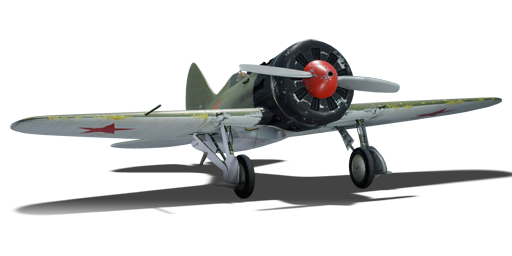

Aviation
I-16 type 5
I
Rank
AB
1.7
RB
1.3
SB
1.3
Battle rating
USSR
Research country
Fighter
Main role
2,900

Research
700

Purchase
General information
Flight performance
Max speed
at 2,700 m
445410465428 km/h
Rate of Climb
18.514.523.614.5 m/s
Turn time
1516.414.215.9 s
Max altitude
9,100 m
Takeoff Run
210 m
Landing
flaps
flaps
Take-off
flaps
flaps
Combat
flaps
flaps
Air
brake
brake
General characteristics
Crew
1 person
Engine
Length
6 m
Wingspan
9 m
Wing Loading
121 kg/m²
Weight:
Base weight
1.341.391.311.38 t
Fuel in main tanks
0.15 t (47m)
Limits:
Max Speed Limit (IAS)
700 km/h
Mach Number Limit
0.75 M
G limit
≈ -6/14 G
Flap Speed Limit (IAS)
L / T / C
700 / 700 / 700 km/h
Gear Speed Limit (IAS)
260 km/h
Offensive armament
2 × 7.62 mm ShKAS machine gun
Ammunition
1,800 rounds
Fire rate
1,800 shots/min
One-second Burst Mass
0.29 kg
| Belt | Belt filling | Armor penetration (mm) at a distance: | |||||
|---|---|---|---|---|---|---|---|
| 10 m | 100 m | 500 m | 1000 m | 1500 m | 2000 m | ||
| T/Ball/Ball/AP-I/AI | 13 | 12 | 7 | 3 | 2 | 0 | |
| AP-I/AI/API-T | 13 | 12 | 7 | 3 | 2 | 0 | |
| AP-I/API-T | 13 | 12 | 7 | 3 | 2 | 0 | |
| AP-I/AP-I/AP-I/AI | 13 | 12 | 7 | 3 | 2 | 0 | |
Economy
Repair cost
Basic → Reference
AB
117 → 146 

RB
161 → 201 

SB
113 → 141 

Crew training
200 

Experts
1,000 

Aces
20 

Research Aces
96,000 

Reward multiplier
AB / RB / SB
10 / 20 / 60 % 

100 % 

Total cost of modifications
2,970 

895 

Talisman cost
190 

Research order:
Flight performance | |
|---|---|
Survivability |
|---|
Weaponry |
|---|
Rating by players
You must play more than 3 battles for the last week and more than 10 battles in a vehicle to rate it.
Like:
34
Flight performance:
Not enough ratings
Survivability:
Not enough ratings
Aerial combat:
Not enough ratings
Ground attack:
Not enough ratings
Balance:
Not enough ratings
Tips & Tricks
This space is currently empty
Do you know any interesting vehicle features?
Loading...
No articles about this vehicle yet
Become the first author and get rewards!
Write a guide, tell about interesting historical facts, make a tutorial or simply an interesting post.
No more content